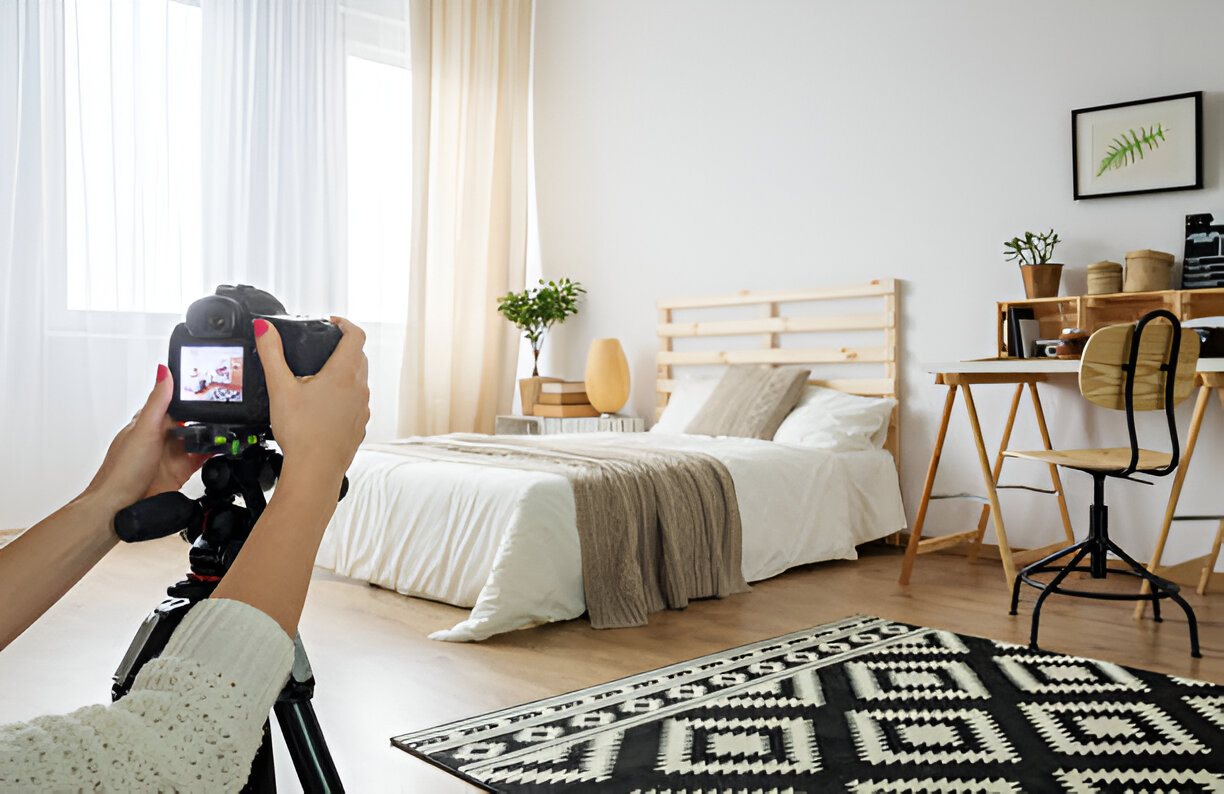Tips for Selling Furniture Online: How to Photograph and Describe Furniture for Sale
Selling furniture online is an effective way to clear space and make some extra money. However, in a crowded marketplace, presenting your furniture in the best possible way is key to attracting buyers. A combination of well-thought-out photos and compelling descriptions will help you stand out and sell faster. Here are some practical tips to maximize your success when selling furniture online.
1. Photographing Your Furniture

Good photos are essential for making your furniture appealing. Here’s how to capture the best images:
a. Clean and Prep Your Furniture
Before you start taking photos, ensure your furniture is clean and in its best possible condition. Dust, polish, and remove any stains or marks. If necessary, tighten loose screws and make small repairs. Buyers will be drawn to items that look well-maintained.
b. Choose the Right Lighting
Natural light is your best friend when photographing furniture. Position the item near a window to take advantage of soft, diffused daylight. Avoid harsh overhead lighting or taking photos at night, as this can create unflattering shadows. If you must take photos indoors, ensure the room is well-lit with soft, white light.
c. Shoot from Multiple Angles
Offer a full view of the furniture by capturing it from different angles: front, back, sides, and any details such as texture, handles, or intricate designs. Include close-up shots to highlight the craftsmanship, condition, or unique features. Buyers appreciate transparency, and detailed images build trust.
d. Use a Neutral Background
A clutter-free background ensures the focus remains on the furniture. Ideally, place the item against a neutral wall or in a simple setting without distractions. If possible, stage the furniture in an appealing way—use minimal décor or create a lifestyle scene, but don’t overwhelm the image with unrelated objects.
e. Show Any Flaws or Damage
Be upfront about any scratches, dents, or imperfections by showing them in photos. Buyers will appreciate your honesty, and it avoids misunderstandings later. Transparency helps build trust, which can lead to quicker sales.
2. Describing Your Furniture

A clear and accurate description is just as important as great photos. Here are some tips to create compelling descriptions:
a. Be Specific About Dimensions
Buyers need to know if the furniture will fit in their space, so include precise measurements—length, width, height, and depth. Consider using both metric and imperial units to cater to a wider audience.
b. Mention the Material and Finish
Describe the materials used (e.g., solid wood, metal, glass) and the finish (e.g., matte, glossy, stained). If the furniture has a particular style (e.g., mid-century modern, rustic, contemporary), include this in the description to attract buyers with specific tastes.
c. Highlight Features and Benefits
Point out any unique features, such as extra storage, built-in lighting, or modular design. Additionally, describe how the furniture can benefit the buyer. For instance, a pull-out couch offers both seating and sleeping space, or a dining table with an extendable leaf can accommodate large gatherings.
d. Be Honest About Condition
Accurately describe the condition of the furniture. Use terms like “new,” “gently used,” or “vintage” to indicate its status. If there are any flaws, mention them (along with the corresponding photos). Be clear about whether the item needs any repairs or is fully functional.
e. Tell a Story (If Relevant)
People are often drawn to furniture with history. If your item has an interesting backstory—whether it’s a family heirloom or a piece from a well-known brand—share that in your description. Personal stories or connections to iconic designers can add emotional appeal and help justify the price.
3. Pricing and Listing Tips

a. Do Your Research
Research similar items to get an idea of market value. Check listings for comparable furniture in terms of brand, condition, and style to set a competitive price. Don’t overprice, but also avoid underselling yourself.
b. Include All Necessary Details
Make sure your listing includes relevant details such as pick-up or delivery options, payment methods, and whether the price is negotiable. Buyers appreciate transparency on logistics before committing to a purchase.
c. Use Keywords in Your Listing
To improve the chances of your listing being found, use relevant keywords like “solid oak coffee table,” “vintage mid-century chair,” or “modern sectional sofa.” Including descriptive and searchable terms will make your listing more visible.
Final Thoughts
Selling furniture online successfully requires more than just snapping a few photos and posting a price. By carefully presenting your items with high-quality photos, detailed descriptions, and a fair price, you can attract serious buyers and close deals faster. Take the time to show your furniture at its best, and the results will follow.






